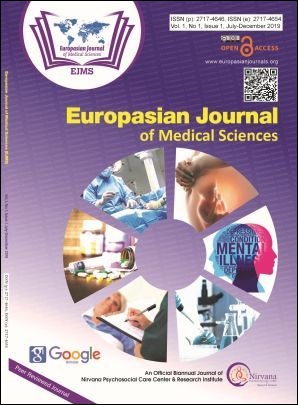Vitamin D Deficiency: A common problem worldwide
Keywords:
Sunlight, Ultraviolet, Vitamin-DAbstract
Sunlight exposure is the most important source of vitamin D for human beings. We can get vitamin D from other sources such as diet and dietary supplements as well. Human body synthesizes most of the vitamin D from exposure to direct Ultraviolet B (UVB) sunlight. Regular, short periods of UVB exposure during the summer months are enough to get required vitamin D for most people. Sunscreen might block the vitamin D synthesis process in skin. Solar ultraviolet B radiation (wavelength, 290 to 315 nm) penetrates the skin and converts7-dehydrocholesterol to provitamin D3, which is rapidly converted to vitamin D3. Excessive exposure to sunlight does not cause vitamin D3 intoxication but excess oral intake can cause intoxication. Therefore, we should be careful while taking dietary supplements of vitamin D. Regardless of the good sunlight exposure, surprisingly, the blood level of vitamin D is found to be low in people of South Asian countries including Nepal. No practice of sun bath and all the time body coverage with clothes could be the possible reason of low vitamin D level in this region of the world. Another possibility is normal reference value of vitamin D level might be low in South Asians compared to western countries. So, large scale research including all required parameters can solve these concerns and queries.
Downloads
Downloads
Published
How to Cite
Issue
Section
License
The author(s) retain the ownership of the copyrights for their work published in EJMS without any restrictions. Upon submission, the author(s) grants EJMS a license to publish, including to display, store, copy, and reuse the published content.
License to Publish
By submitting a manuscript to EJMS, the author(s) grant the journal a non-exclusive license to:
- Publish and distribute the content in all formats, media, and platforms (both existing and future), while identifying EJMS as the original publisher.
- Reproduce, display, and store the content in both print and online formats, including institutional and digital repositories.
- Translate, adapt, and summarize the work, including reprints, extracts, and abstracts.
- Develop derivative works based on the original content.
- Include the work in electronic databases and provide links to third-party materials.
Creative Commons Licensing
In addition to EJMS’s publishing rights, authors grant third parties the right to use, share, and distribute their work under the Creative Commons Attribution 4.0 (CC BY 4.0) International License. This allows unrestricted use of the content, provided proper attribution is given to the original author(s) and the journal.

